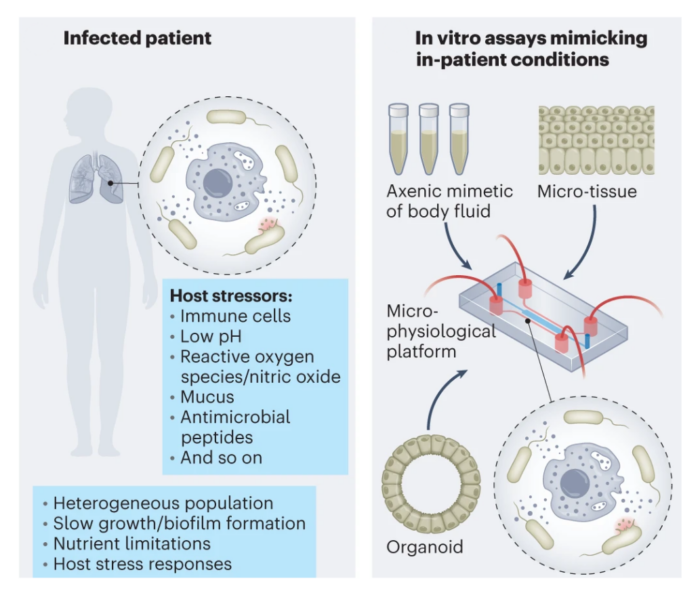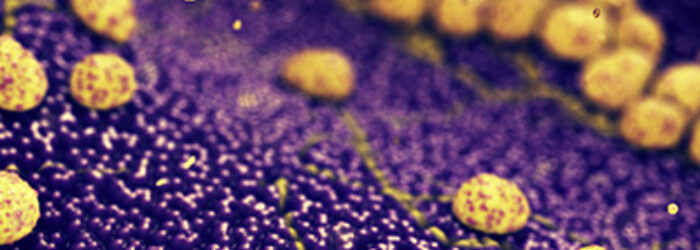Infection Models
Our research studies the complex interactions between pathogenic microorganisms and the human host in vivo.
We examine how dangerous human pathogens infect human tissue and organs. By analysing samples taken from infected patients, we generate a knowledge bases that guides the development of laboratory models mimicking conditions in the patient.
Our patient-mimicking models consist of complex 3D microtissues, which faithfully simulate the morphology and function of natural human tissues and organs. By recreating a physiological human tissue environment, we can discover the mechanisms used by bacteria to infect human tissue as though they were still inside the human body. We use these models to discover previously unidentified biological features and mechanisms, and identify antibacterial targets that have been systematically overlooked under conventionally-used laboratory conditions. Our current models include miniature lung, bladder, and placenta, as well as cellular models mimicking B. melitensis infection in blood, and S. aureus-infected deep tissues.
To ensure that our models are accurately mimicking human physiology, they are benchmarked against healthy human tissue/blood and clinical samples infected with one of the four focus pathogens (P. aeruginosa, E. coli, S. aureus, B. melitensis), and validated with a selection of clinically relevant isolates of target pathogens and with available pre-clinical and clinical data for standard-of-care antibiotics.
The most promising models are miniaturised and optimised to facilitate high-throughput screening applications, and connected to a pharmacokinetic (PK) module with one of our many pharmaceutical collaborators to enable pharmacodynamic (PD) studies. This approach enables the optimal translation of our in-vitro anti-infective findings to the clinics and to treating infected patients.



